The best new synths, drum machines and samplers of NAMM 2017
Our round-up of the best tech noisemakers
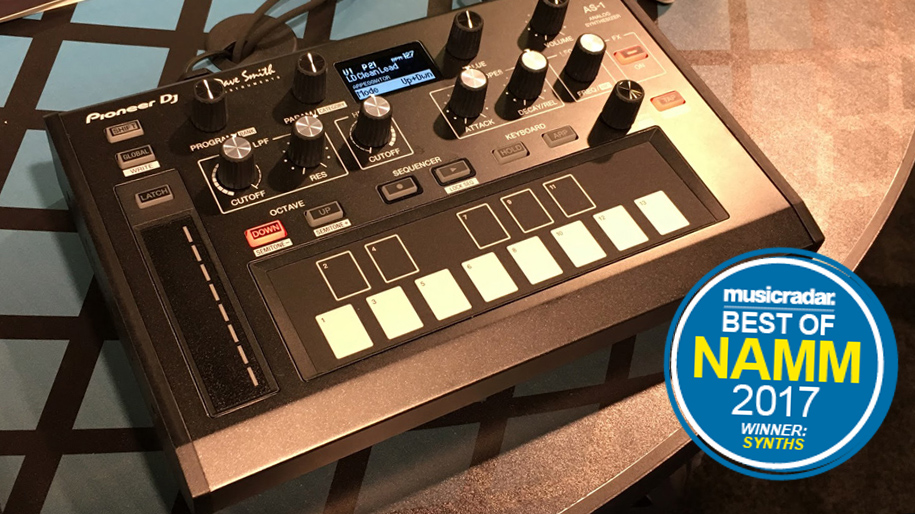
Pioneer DJ Toraiz AS-1
NAMM 2017: While this year may not go down as a vintage one for hardware synths at the NAMM Show, as ever, there were some safe, middle-of-the-road instruments coupled with a selection of more ‘out there’ efforts.
We might have been missing the likes of Arturia’s MatrixBrute, or a brand new Moog monster, there were still a fair few new instruments that show plenty of promise.
We spent the whole show scouring the halls to find those hidden gems and getting our sticky mitts on demo models available, so sit back, relax and click through our gallery of synth, drum machine and sampler highlights from this year’s show. Let’s start with the latest collab between Dave Smith and Pioneer DJ…
Best in show - hardware synths: Pioneer DJ Toraiz AS-1
The latest in what could well be a long line of collaborations between the West Coast synth maker and one of the world’s most popular DJ brands is the Toraiz AS-1 monosynth.
OK, so it’s not entirely brand new tech under the bonnet, with a single voice from Dave Smith Instruments' Prophet 06 providing the engine, but the rich palette of sounds on offer dispels any previous thoughts that this was going to be just some sort of ‘303-like’ bass synth.
The interface is unhurried and ideal for users who are not all that au fait with the nitty gritty of sound design, and that’s where this box really works. Yes, Pioneer DJ looks like it’s gunning for the pro producer market with its new Toraiz range (especially with the SP-16), but we believe they it’s playing quite safe with this one. It bridges the producer/DJ gap rather well.
The more discerning synth-head might get a little frustrated at first, as, at first glance, this instrument is geared more towards preset surfing and tweaking than solid patch building. However, spend a little time with the menu system and you’ll be building sounds from scratch in no time. To further ease any editing pain, you could probably see a software editor being released at some point.
One area where it does slightly fall down is with the keyboard touchstrip. You won’t find any smooth Volca-like action here. You can feel each key as an individual button as you slide your finger over the ribbon, and it doesn’t feel that pleasant. That said, this is probably not designed to be used for performance - you’d plug in a proper keyboard if you wanted to play this synth live.
The AS-1 could be seen as an upgrade to the Mopho and, like its bright yellow forebear, it’s solidly built, too.
More info: Pioneer DJ and Dave Smith have announced the Toraiz AS-1 monophonic analogue synth
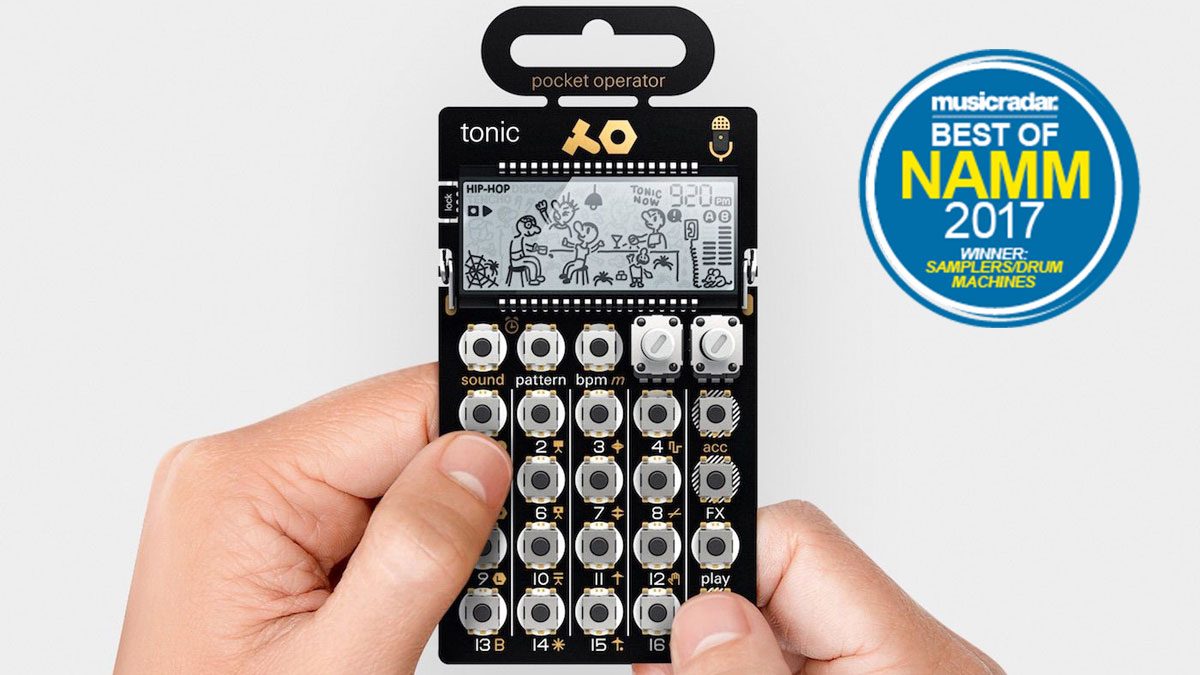
Best in show - drum machines and samplers: Teenage Engineering PO-32 Tonic
Teenage Engineering’s PO range just got serious with the introduction of the PO-32 Tonic drum synth.
There’s tight integration with Sonic Charge's MicroTonic plugin - you can transfer sounds and pattern sets via an onboard microphone and good ol’ modem technology.
Teenage Engineering had approached Sonic Charge’s Magnus Lindström to work on this project a good while ago, and finally he relented. In just six months, he managed to recode MicroTonic to talk to the Pocket Operator hardware, although not without a fair few headaches along the way.
While the preset and sound transfer seems strange at first, you’ve got to hand it to them for finding such a novel way to make use of a microphone - something we’re assured will be making its way onto upcoming Pocket Operators.
In practice, the transfer is dead simple. You build your sounds in MicroTonic, hit the ‘Optimise for PO-32’ button and, making sure the mic is lined up next to your laptop’s speaker, you’ll have transferred the data in just three seconds. If you happen to be in a noisy environment, which the NAMM Show definitely is, then you may encounter an error. This can easily be sorted by boosting the signal; simply plug a cable from the headphone jack on the host computer to the input socket of the PO-32.
It’s great that Teenage Engineering is evolving the PO format and this talk of microphones being added to the next generation can only mean good things.
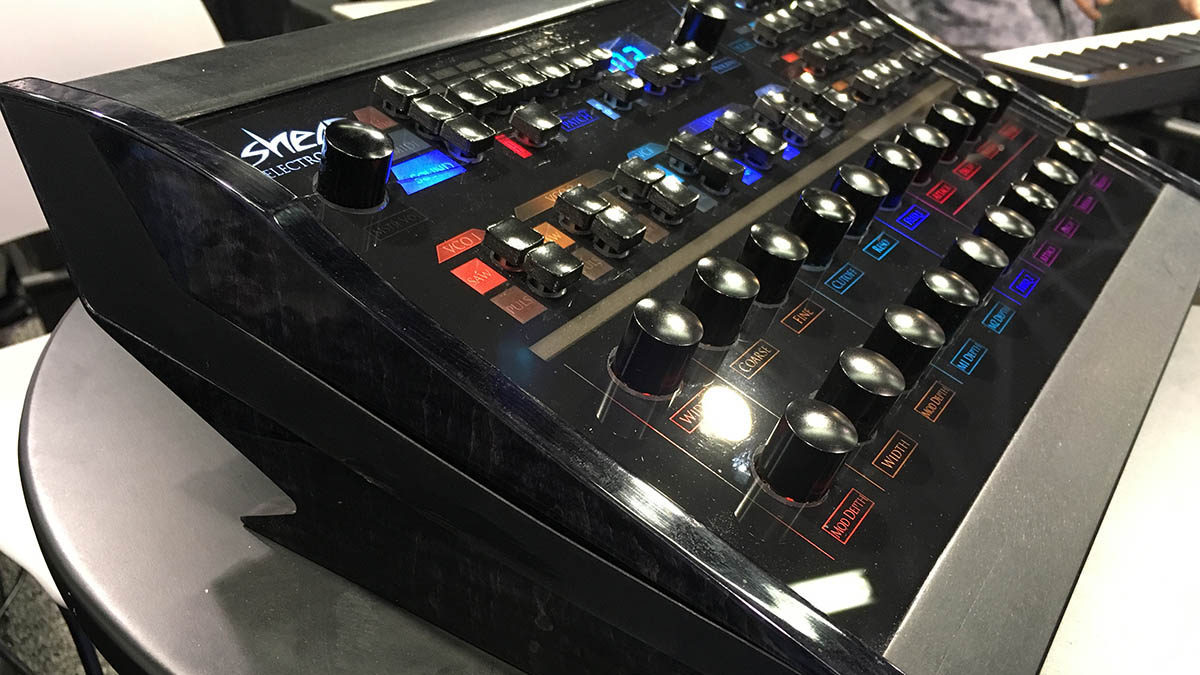
Shear Electronics Relic-6
Proving that the NAMM Show can still throw up the odd gem when it comes to cool new products was show debutant Shear Electronics with the Relic-6.
The 6-voice polysynth is all-analogue and based on the Oberheim OB-X, with two VCOs and an Oberheim-style 12db 2-pole lowpass filter.
The brains behind the Relic is 18 year old Jacob Brashears, who began the journey of recreating this old classic when he was just 15. How many of us can honestly put up our hands and say we were toiling over dusty old schematics at that tender age?
It’s not surprising to hear that the Relic-6 took three years to develop; school got in the way, we suspect. And while this OB-X remake is still at the pre-production stage, it is hoped that the first units will be available for purchase this summer.
More info: Meet the 18-year-old who's made a new hardware emulation of the Oberheim OB-X synth
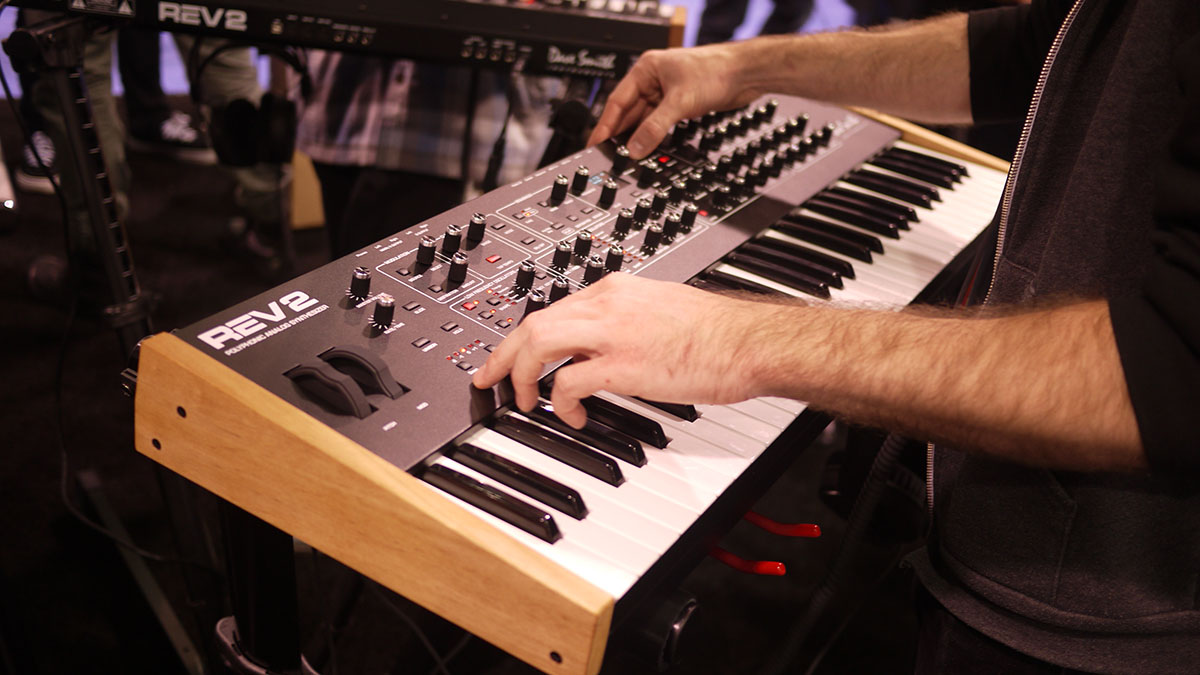
Dave Smith Instruments REV2
Not ones to be offering just the one new product at NAMM, Dave Smith Instruments also introduced us to the REV2, a Prophet 08 on steroids.
This revved-up version of the ‘08 features double the voices, but is also being offered in an eight-voice variation at a lower price, which will no doubt gun for a slice of the Behringer DeepMind 12 ‘low-cost’ polysynth pie.
More info: Dave Smith's REV2 synth is a more powerful and affordable version of the Prophet '08
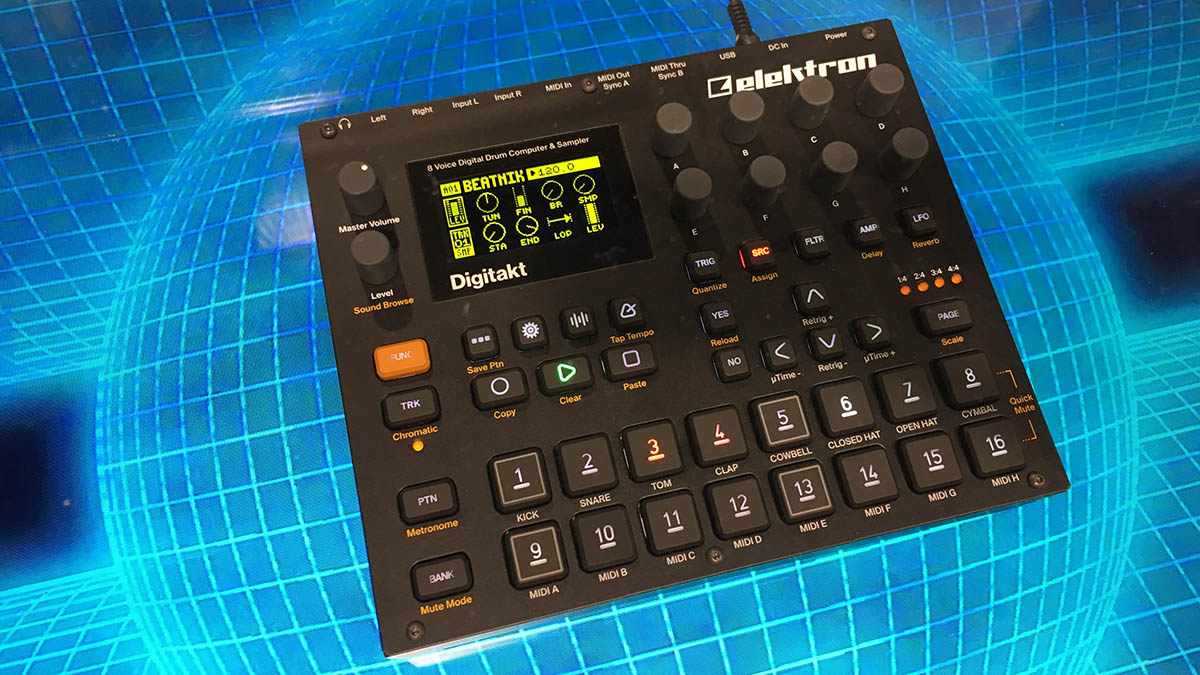
Elektron Digitakt
On paper, Elektron’s latest music production tool, would’ve edged the competition in our Best in Show for drum machines. However, we were unable to get our hands on this digi-drum box as there was only one non-working prototype on the Elektron booth.
Housed in what looks to be Elektron’s new favoured form-factor (see similarities to size of the Analog Heat), Digitakt, as the name would suggest, is all digital. The Swedish manufacturer looks to be moving away from producing analogue machines, in favour of the greater possibilities and exploration within digital architectures.
More info: Elektron's Digitakt is a digital "beatmaking powerhouse"
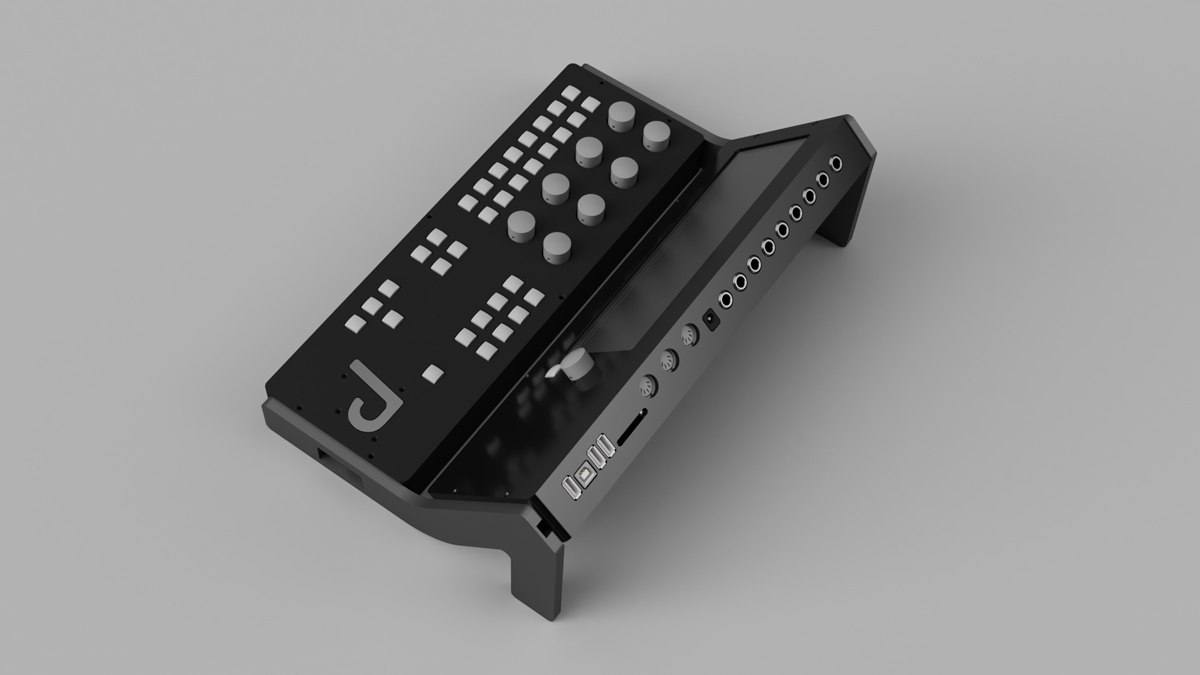
Percussa Synthor System 8
We first saw the AudioCubes back in 2008 and, while these quirky little boxes were pretty forward-thinking in terms of interface design and human interaction with musical instruments, they’re not for everyone.
Fast forward eight years and Bert Schiettecatte brings us the next instrument from his Percussa brand, the Synthor System 8.
Sticking with a wireless ecosystem, the System 8 is a "powerful hardware digital modular synthesis system". The synth is made up of two parts: the base station, also known as Remote, takes care of the control aspect to the synth, whereas the Engine unit runs the Synthor synthesizer software.
The Synthor System 8 also utilises the latest version of the AudioCubes as controllers for proximity-based modulation.
While we really like the idea of a wireless and modular synth ecosystem, it feels like the AudioCubes slightly let the experience down. They feel a bit too clunky and needless for the purposes of parameter adjustment. Sure, it’s a fun and tactile approach, but as the Synthor feels like it’s aimed at ‘powerful’ synthesis, the blocks slightly detract from the task at hand.
That said, it’ll be interesting to see how the platform develops and what comes next in the evolution of the product.
More info: Percussa's Synthor System 8 is the digital modular system that does away with wires
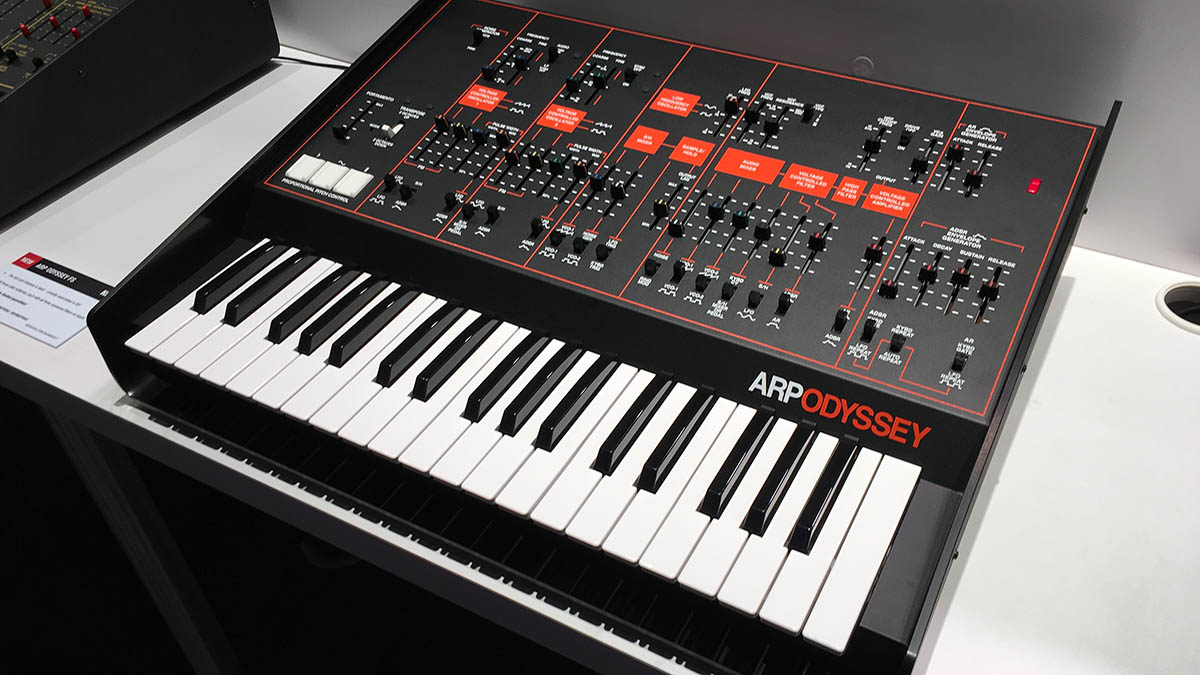
Korg Odyssey FS
Korg hit us with its remake of the ARP Odyssey just two years ago, but it was a3/4-sized version that utilised the Japanese manufacturer’s slim keys, which can also be found on the likes of the MS-20 mini and RK100S keytar.
This move was derided by certain commenters, but now the Japanese giant has decided to release a full-size version.
We had a go on one of the models on Korg’s booth at the show and, while full-sized keys would always be our preferred option in comparison to mini keys, we still feel that the mid-sized key format from Korg is perfectly adequate on this synth.
In terms of specs, the Odyssey FS doesn’t really offer anything that the smaller Odyssey doesn’t. Yes, the control interface gives you a bit more space, but the smaller edition doesn’t really feel cramped in any way.
The full-sized version will likely appeal to the purists who aren’t short of space, or a few bob, as this version is quite a bit more expensive and noticeably larger than its smaller and slightly older sibling.
More info: This full-size Korg ARP Odyssey could be the one you've been waiting for
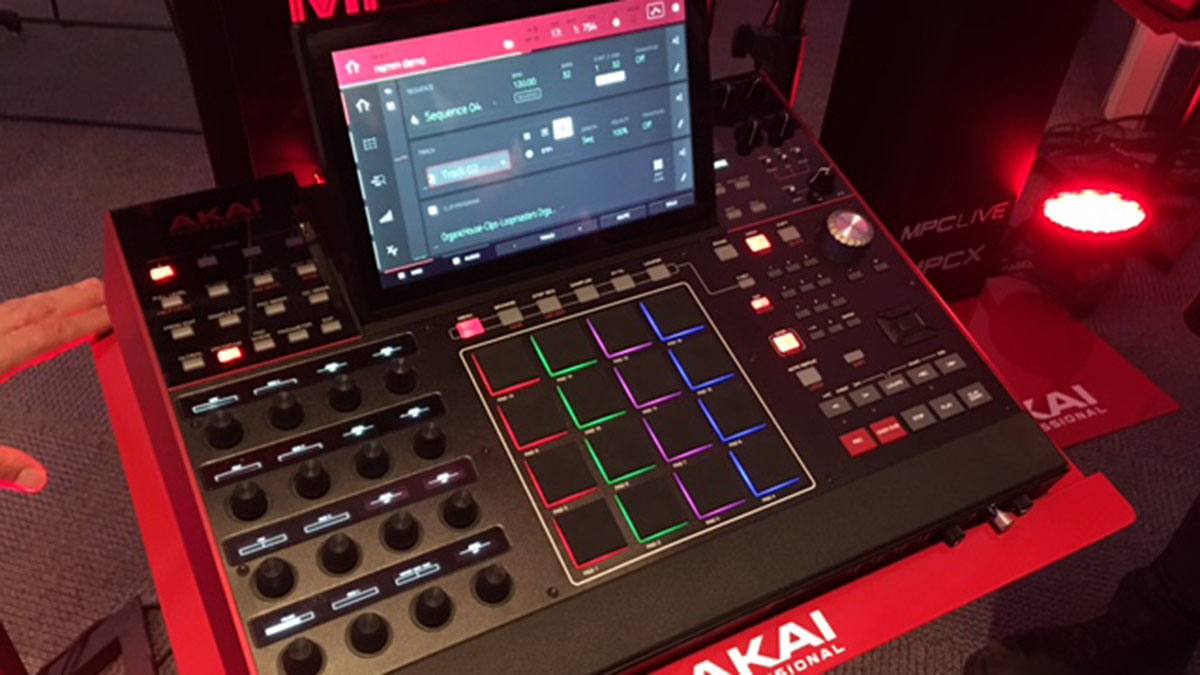
Akai Pro MPC X and Live
These are the MPC we’ve all been waiting for. Both models look to represent a return to form from Akai, thanks to their standalone operation.
We’re used to quite a dominant presence from the inMusic brands at NAMM, with their usual spot being at the front of Hall A. However, this time, Akai and its sister brands were upstairs in a room all to themselves, which was invite only.
The standout edition is obviously the X, with its vast array of connectivity and control, but we’re sure the Live edition’s battery power option will attract interest from live performers.
Both units make use of the MPC 2.0 software and Akai looks to be on course to release its new production boxes in the next month or so.
More info: Akai Pro's new MPC X and MPC Live take pad-based production back to its standalone roots
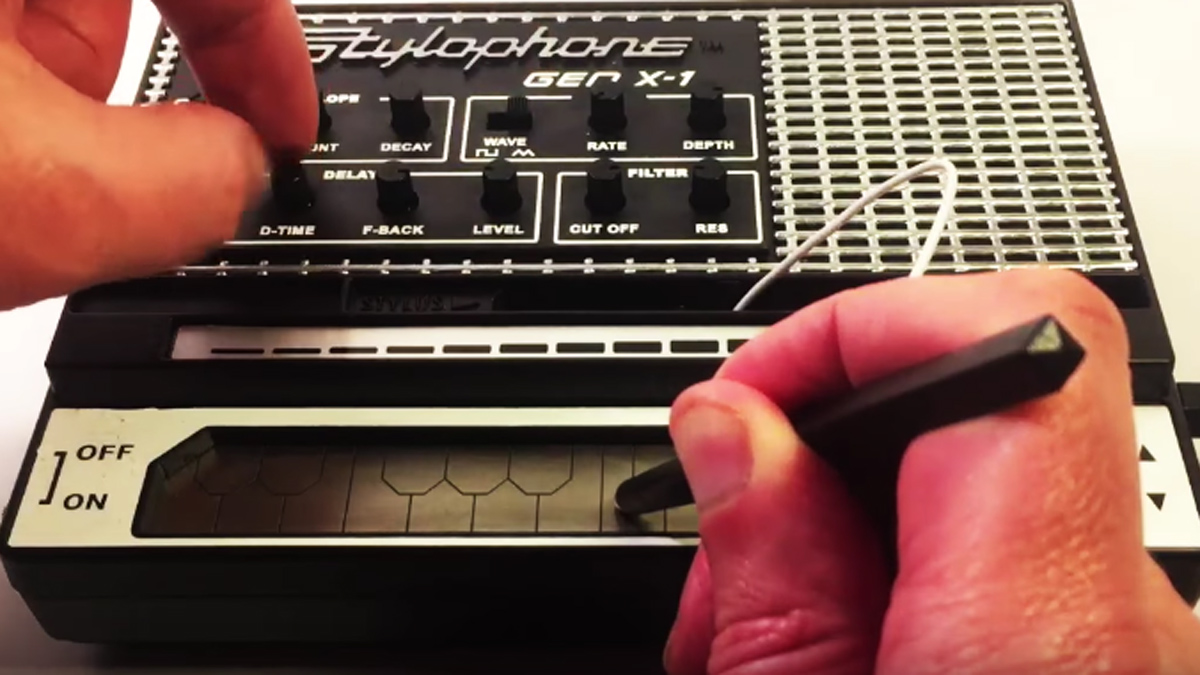
Stylophone Gen X-1
While the Stylophone had a short rennaisance a few years ago, it never quite hit the heights that it did when it was originally released way back in the ‘60s.
Fast forward half a century and the Gen X-1 looks like it could be taken more seriously, with the addition of a filter and LFO. Whether it will bother Korg’s sales of the Monotron we’re not sure, but we’ll certainly give it a go when we get one in for review.
More info: The Gen X-1 is a souped-up Stylophone that might be more than a novelty
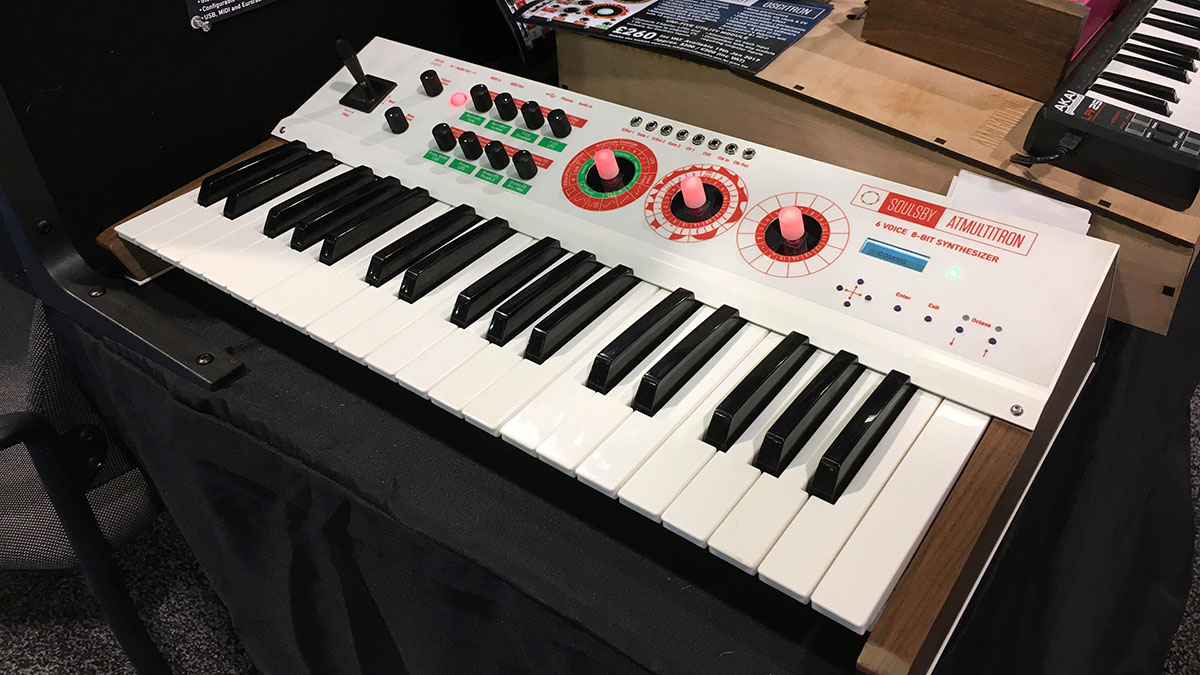
Soulsby Atmultitron
Paul Soulsby first hit us with the Atmegatron a few years back, and after a slew of special edition boxes and Eurorack adaptations, he’s back, this time to introduce us to the Atmultitron.
We caught up with Paul at the show and, as bad luck would have it, his prototype was not working on the day we popped over to the Soulsby Synthesizers booth.
What we can tell you is that the Atmultitron is a 6-voice polyphonic 8-bit synthesizer with a three-octave keyboard. The final version will feature Eurorack connectivity and the same wavetable sampling as the Oscitron, along with sequencing and versatile modulation routing.
We’ll bring you more news on the development of this very cool 8-bit poly as they become available. In the meantime, you can check out the Soulsby Synthesizers website for more information.
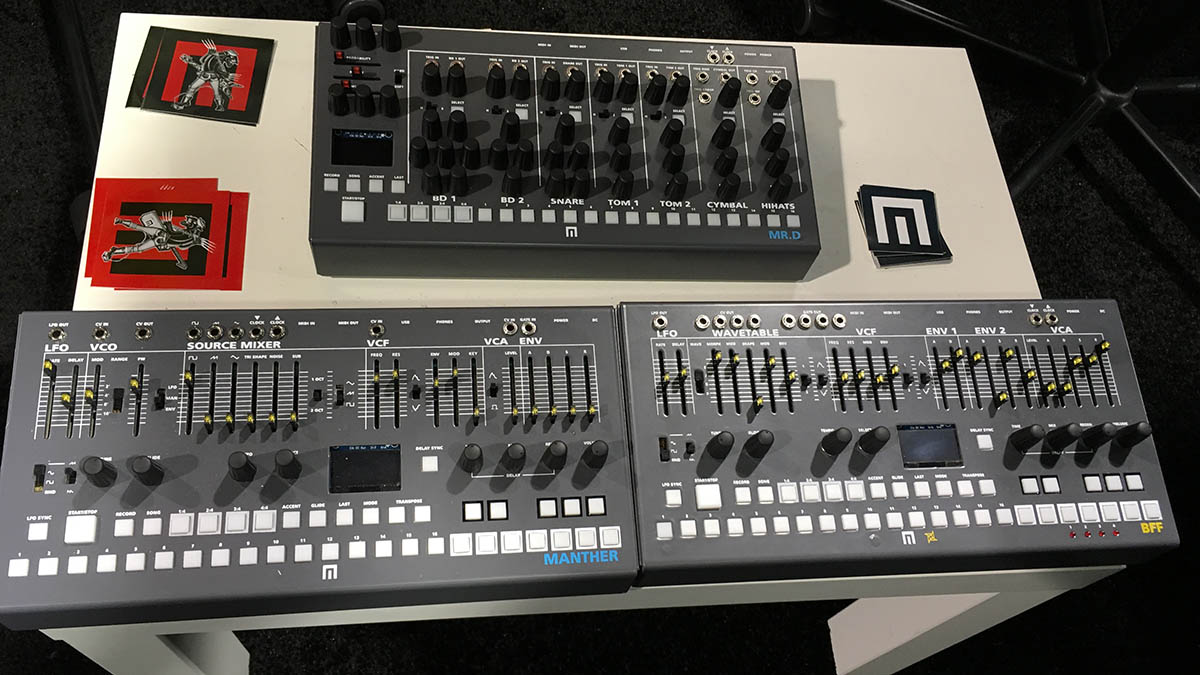
Malekko prototypes
It seemed that non-working prototypes were quite the thing at this year’s show and, while we cannot confirm how these things sound, many of them have already piqued our interest.
This can certainly be said of Malekko Heavy Industry’s new synths. The Portland, Oregan outfit is the brains and manufacturer behind the new Roland System-500 series, and it looks to be sticking with the Roland vibe here. These three modules are all based around the same chipsets as you’ll find in the SH-101, MC-202 and other legendary Roland instruments.
Two of the three units are analogue; Mr D is a 6-part drum machine and Manther is a 3-oscillator monosynth, whereas the BFF is a wavetable synth. All feature plenty of analogue I/O and 16-step sequencers.
We’re hoping to see working models in the near future, which could be as soon as Superbooth 17. More information on other products can be found on the Malekko website.

Modal Craft
Bristol-based Modal Electronics seems to have grown exponentially, from first appearing at the NAMM show just a few of years ago, after launching the 12-voice polysynth 002, to becoming the serious player that it is today.
This year the company hit NAMM with a brand new booth (much larger than before) that featured the original 002, the smaller duophonic 001, the 100%-analogue behemoth 008, a bunch of Eurorack modules, and the newest addition to the already impressive line-up, the Craft DIY synth.
Craft was announced a few months back, but not wanting to rest on its laurels, the Brit synthesists were showcasing an update to the editor (available for Mac OS, iOS and soon Android), which enables you to chain multiple Crafts together to form the Voltron-like Poly Craft. You can create either a polysynth or a multitimbral soundset.
There’s no official word as to when the update will be released, but we’re hoping it will be soon. For more information, head over to the Modal website.

I take care of the reviews on MusicRadar and Future Music magazine, though can sometimes be spotted in front of a camera talking little sense in the presence of real musicians. For the past 30 years, I have been unable to decide on which instrument to master, so haven't bothered. Currently, a lover of all things high-gain in the guitar stakes and never one to resist churning out sub-standard funky breaks, the likes of which you'll never hear.


“A synthesizer that is both easy to use and fun to play whilst maintaining a decent degree of programming depth and flexibility”: PWM Mantis review
“Do you dare to ditch those ‘normal’ beats in favour of hands-on tweaking and extreme sounds? Of course, you do”: Sonicware CyDrums review
“A synthesizer that is both easy to use and fun to play whilst maintaining a decent degree of programming depth and flexibility”: PWM Mantis review
“Do you dare to ditch those ‘normal’ beats in favour of hands-on tweaking and extreme sounds? Of course, you do”: Sonicware CyDrums review









